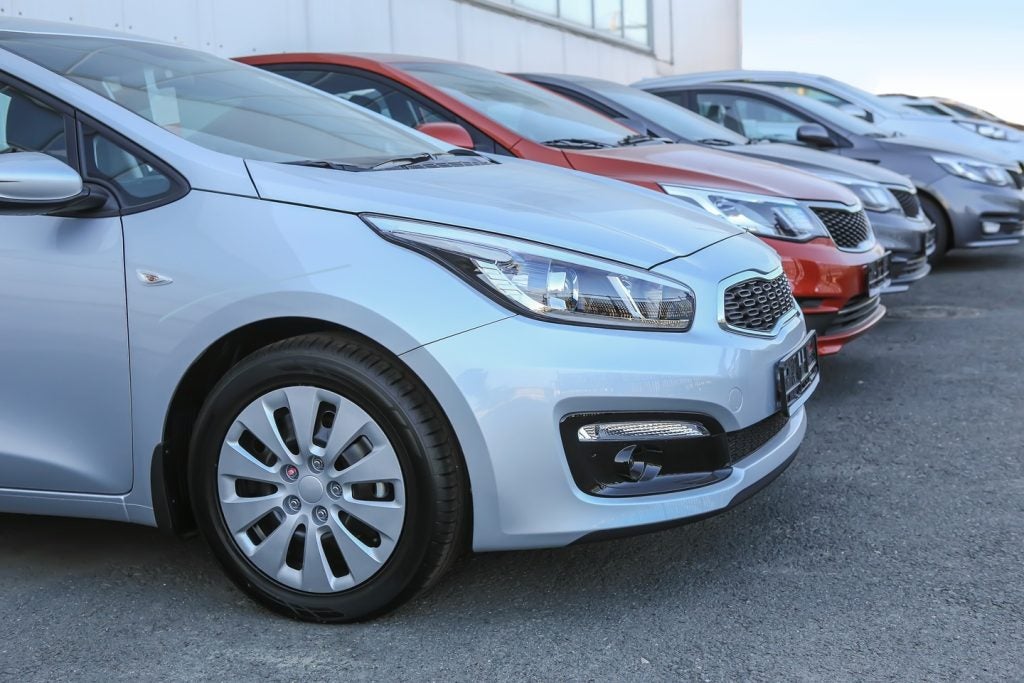terms growing – and are fleet customers looking for longer-term
rental terms right from the start, asks Jo Tacon.
For some years, the standard contract hire term for corporate
fleet customers has been three years, 60,000 miles – nice round
numbers which go well together. However, of late it has seemed that
fleet contract terms are fragmenting, with anecdotal evidence that
more and more customers are looking to extend the leases on their
current vehicles on an ad-hoc basis to reflect uncertainty over
staffing levels, while some customers – impressed by recent
advances in passenger car technology – are looking to set longer
contract terms from the outset. But will longer fleet contract
terms hurt the industry, if they cause new business volumes and
renewals to fall?
Signs of change
Fleet consultant Colin Tourick says that extensions and longer
contracts are an issue for his clients – “it’s on their radar”, he
says. Tourick’s view – and one that is echoed by many fleet
operators – is that the current interest in longer terms and
extensions is driven by the economic downturn. “All recessions – if
indeed we are going into one – see companies extending existing
leases and taking new cars on longer leases,” he says.
“Whilst there are fewer extensions during the good times – clients
just take new cars – once a longer lease period has been
established, usually in a recession, it tends to stick around,”
Tourick observes. “When I started in this industry 30 years ago, 50
per cent of cars were leased for two years and 50 per cent for
three years. Four-year leases were unheard of; now two-year leases
are rare. The movements all came during the intervening recession,”
he adds.
Spokesman for the BVRLA, Toby Poston concurs. “This is something
we’ve heard more about over the past two to three months, and is
driven by the credit crunch and its effects,” he says. “It’s
something our leasing company members are keen to see, as it is a
win-win situation for lessors and customers. End-users get cost
control in the short term, and flexibility if they don’t want to
commit to a new three-year lease, and fleet providers can offset
residual losses by extending the life of their cars.”
“There are some situations where leasing companies will be very
pleased if customers extend existing contracts, as the lessors
don’t want the vehicles coming back into the market in the current
climate,” comments Roddy Graham, commercial director of Leasedrive
Velo.
Julie Jenner, key solutions manager at GE Fleet says that
flexibility on the part of the lessor is an important element of
customer service. “It’s not just about the new business volume,”
she says. “We’ve had good and bad times, and so have they – it’s
about sticking with customers.”
How well do you really know your competitors?
Access the most comprehensive Company Profiles on the market, powered by GlobalData. Save hours of research. Gain competitive edge.

Thank you!
Your download email will arrive shortly
Not ready to buy yet? Download a free sample
We are confident about the unique quality of our Company Profiles. However, we want you to make the most beneficial decision for your business, so we offer a free sample that you can download by submitting the below form
By GlobalDataIn fact, it is fleet brokers who could be hardest hit by a trend to
lengthier contract terms, and extensions, as they profit from
transactions rather than from continuing relationships. Mark
Sinclair, MD of Alphabet says: “Brokers only make money when
selling a new lease, so any shrinkage in the size of the new
business market [if customers return to market less frequently]
will hurt them.”
The four-year barrier
Jenner says that typical mileages and contract lengths are creeping
upwards, from an average of 36 months/75,000 miles a few years ago
to 48 months/100,000 miles currently. “We find that, for essential
user fleets, people are now happy to run cars for up to 48 months,”
she says. But there is a psychological cut-off point after four
years, past which employer and employee are reluctant to venture.
“There used to be a reduction in benefit-in-kind taxation for cars
over four years old, but that has gone now, and you can’t expect an
employee to pay the same tax on a five-year old car that they do on
a new one,” she points out.
The purpose and value of a company car to an employee must also be
top of the agenda, lessors stress. Sinclair says: “If a car is a
‘perk’ car, rather than an essential business tool, then a longer
contract can reduce the benefit massively in an employee’s
eyes.”
Peter Austin, general manager at Siemens Motor Contracts, agrees
with the view that the status of a company car must be protected:
“To be having conversations about pushing contracts to four or five
years could damage the employee relationship. Cars these days are
more reliable than ever and could take the extra use, but whether
this will attract the best staff is another question.” Jenner notes
that in some sectors, such as the pharmaceutical industry, the
company car scheme is vital for companies wishing to attract and
retain the best staff. “Certain industries will not consider
running a car to 100,000 miles,” she says.
Companies which are unsure of their future staffing levels are
looking to extend rather than take out a new contract – a reaction
to market uncertainty, which may force job cuts. In such instance,
flexible, ‘ad hoc’ extensions are a sensible choice for companies
that may look to reduce headcount in a few months’ time.
Shorter, ‘flexi-lease’ contracts may also be used by companies
whose staffing needs are likely to change in the near future.
“Taking a car on a flexi-lease may be more expensive, but it can be
worth it for a company that has someone on a contract with only
three months left to run,” Sinclair observes.
Flexibility is also prized by sectors such as estate agents, who
are currently feeling the painful effects of the collapse in the
property market. Sinclair says: “Estate agents have learnt in
previous economic downturns that they have to move quickly, and
have to try to reduce costs as quickly as possible.” Other sectors
– such as financial services – are more reluctant to hire and fire,
and may look to reallocate resources instead, he notes.
The right SMR balance
With leased cars which are extended past three years, or taken on a
four-year contract, fleet operators must keep in mind potentially
increased maintenance costs. “The fourth year takes the vehicle out
of warranty,” points out Austin. “The total cost of ownership of
the vehicle needs to be kept in mind – running cars for an extra
year is not just straightforward good news, from a residual value
point of view.”
“Some models’ high mileage services can be very costly – and
sets of replacement tyres are not cheap,” warns Mark Norman,
operational development director at CAP. But on the plus side, he
says, “keeping a car on fleet will not mean it depreciates more
rapidly than is occurring in the general market anyway, and it is
generating extra monthly income.” He estimates that the additional
mileage will only add “around 5 to 10 per cent depreciation”, as
the rate at which a car’s value falls slows as it ages. “There is
always an element of risk in the decision, so extending leases
should be looked at on a case by case basis,” Norman says.
Sinclair points out that it might make more sense for low-mileage
fleets to look at longer lease terms, but for company car drivers
who travel 25,000 miles or more per year, “the maintenance costs
will start to shoot up”.
The best way?
Paul Roberts, director of Lex Momentum, says that while there is
anecdotal evidence that fleet contracts are getting longer, and
that more clients are opting to extend on an ad hoc basis, there
are other, better ways that costs can be controlled – or removed –
from a fleet. “Extending a contract is one way to save money, but
often not the most attractive,” he believes. “The typical ‘fat’ on
a fleet is around 10 per cent of costs, and this can be reduced by,
for example, giving a cash allowance, controlling fuel and vehicle
choice more strictly, and managing accident costs and daily rental
budgets.”
Graham, meanwhile, thinks that salary sacrifice schemes will
increase in popularity, as fleet customers wake up to their
cost-saving potential. “The trend now is towards lower-cost,
lower-emitting cars, so there are huge savings to be made.” He says
that Leasedrive Velo is seeing more interest from clients in salary
sacrifice, and that it’s a “win-win” for both employer and employee
in terms of lower National Insurance costs and employee
contributions, not to mention a lower total cost of ownership.
“It’s a way to encourage people back into company cars,” he
says.
Ultimately, though, it is the fleet providers that listen to their
clients and work with them to provide the most flexible and most
efficient company car solutions that will benefit in the long run –
even in the midst of troubled economic times. As Jenner comments:
“Anyone can go out and promise the earth to get new business, but
if customers walk out after a year you’ve achieved nothing.”
VEHICLE TECHNOLOGY
Cars that can take the strain
It is apparent even to the untrained eye that cars today are,
compared to models from even half a decade ago, more reliable than
they used to be – and much more efficient, too. As Siemens Motor
Contracts’ Peter Austin says, keeping cars on fleet for longer
nowadays presents fewer technical difficulties than at any time in
the past, from a reliability point of view at least.
However, even laying to one side the questions of staff morale and
potential disincentive which are entwined with the issue of keeping
employees in cars for longer, some lessors believe that given the
rate of technological advance in passenger vehicles, it does not
make sense for clients to commit to staying in the same vehicles
for an extended period of time.
“Looking at the absolutely enormous differences that manufacturers
have made to CO2 emissions, with some cars today emitting 30 per
cent less CO2 than the same model from three years ago, we see
there’s an argument against four-year contracts,” says Roddy Graham
of Leasedrive Velo. As company car and benefit-in-kind taxation are
directly linked to CO2 emissions, he points out, the higher rentals
paid on a two-year lease may well be offset by tax savings, if cars
are chosen with care. “Then of course there is the fuel cost saving
on more efficient vehicles,” he adds.
Not everyone agrees. Julie Jenner of GE Fleet believes that
“technology can only go so far”, and that the huge strides forward
in terms of efficiency that manufacturers have managed to achieve
in recent years “will not continue at the same rate”. For example,
the new BMW 5 Series
EfficientDynamics 520d Sedan has CO2 emissions of just 136g/km – “a
figure that is unlikely to be bettered next year,” Jenner says.
“The next step in technological advances will be the next
generation of alternative fuel vehicles – but they could be
anything up to a decade away.”







